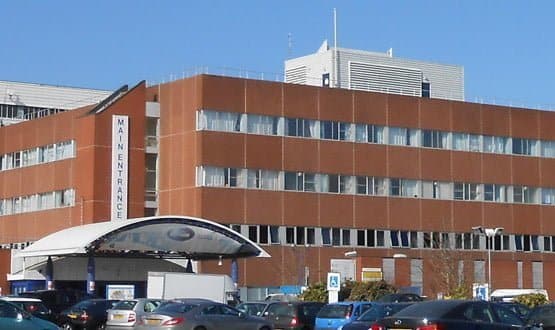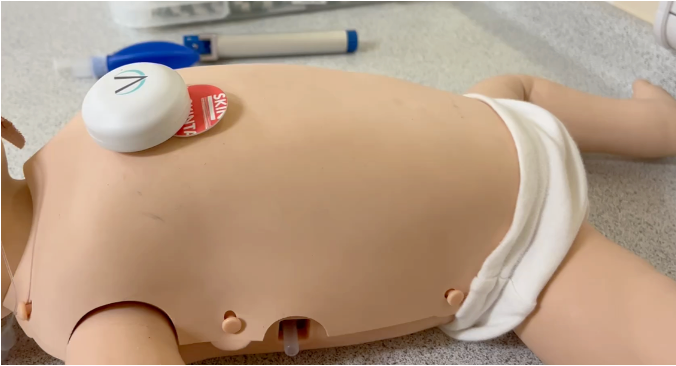New systems for old
- 26 September 2013

Building work is going on outside the main entrance to Arrowe Park Hospital, one of four sites run by Wirral University Teaching Hospital NHS Foundation Trust.
On its website, the trust says the idea is to “create a great first impression, a better patient experience, and a more pleasant environment for trust staff to work in.”
This could also serve as a metaphor for the trust’s IT. Wirral is gradually renovating its once leading-edge technology, with new systems replacing old.
Leading on Cerner in the UK
Back in the 1990s, Wirral was seen as a leader in healthcare IT. Its one-time chief executive Frank Burns was the man behind the 1998 NHS IT strategy, ‘Information for Health’, which preceded the National Programme for IT.
The trust implemented its Eclipsys TDS 7000 system – known as PCIS – 20 years ago. Now, it is the last in the country to retain the ‘green screen’ technology.
Yet letting it go is easier said than done. “We’re replacing a system that’s 20 years old. For many staff it feels sad to let it go,” says Sheila Stewart, its assistant director of informatics.
As a trust in the North, Midlands and East of England, Wirral should have seen CSC deploy iSoft’s Lorenzo EPR as part of the national programme.
However, when it started to look for a replacement for PCIS in 2005, it realised that Lorenzo was unlikely to be ready in time. Instead, it opted to take Cerner’s Millennium through Fujitsu which, at the time, was the LSP for the South.
When Fujitsu dropped out of the programme, the trust signed a direct deal with Cerner in December 2008. Stewart says this has given the trust a number of advantages, including a big say in the anglicisation and UK development of the system.
“The functionality is different [from that offered to trusts in the South and London, which also deployed Millennium as part of the programme],” she says.
“We got far more control over the product. We have a flexibility the trusts within the programme don’t have and we have a much bigger functionality than others. The only drawback is that we have to pay for it.”
Most of the trust now uses Millennium, which has been implemented in phases that started in A&E in May 2010. A couple of years ago, it was talking about switching off PCIS last year.
However, it has retained some PCIS functionality. Most notably, it is still running the e-prescribing module until it can go live with Cerner’s ePMA e-prescribing and medicines management.
“Cerner has rolled out everything now apart from e-prescribing. We are fairly confident that too will move across to the Cerner system,” Stewart says.
Taking up the reins
The trust’s new director of informatics, Mark Blakeman, has only been in his role for a few months, having taken over from Luke Readman, who now works for one of London’s biggest trusts, Barts Health, which is committed to extending Millennium across all three of its sites.
Blakeman arrived just in time for Wirral’s go-live with Cerner’s maternity and pathology modules in departments that previously ran on paper. Blakeman says it has been a revelation to come to a trust that has relatively mature use of IT.
“There were two things that struck me. One, there weren’t any significant data gaps. But what was also obvious was that people knew what to expect,” he says. “It [the maternity and pathology go-live] was very different to most system implementations across the NHS.”
Both Blakeman and Stewart say the go-live “went exceptionally smoothly.” However, some staff are less than thrilled with the new set-up.
Dr Libby Shaw, an obstetrics and gynaecology consultant and labour ward lead, says that although she thinks IT is definitely the way forward, she is not too impressed with the new maternity module.
“On the first day it wasn’t very intuitive and some struggled to use it,” she says. “There are some concerns that it’s not delivering what we wanted.
“There are improvements we will probably see over time, but it will take some time to get used to. The immediate sort of feeling [that we were hoping for] – that we were going to end up with a system what would make life easier – hasn’t really happened yet.”
She acknowledges that some of this may be down to clinical reluctance to use computers.
“From us doctors there needs to be an attitude change on using computers to enter data,” she says. “I think, to be completely honest, the clinicians just want to make sure the system works for us and the patients.”
She also says the trust’s IT team has been a great support and has kept open a line of communication. Meanwhile, the trust does not hide that there have been some difficulties adapting an American system to the NHS.
“It’s no secret that some aspects of the system take more work than others,” says Stewart. “The good news for other Cerner trusts is that we’re making it much more fit for purpose in the NHS.”
Looking out and further out
Having gone live with maternity and pathology, the trust only has a few departmental systems left to replace with Millennium. Its next focus will be nursing documentation, after which it will move on to nursing observations.
It is also working on sharing information with its healthcare community and improving mobile working. The trust has been sending electronic letters to local GPs as part of the Wirral Electronic Health Record for years, but is now working on a pilot to streamline the process.
“For a long time we’ve been sending correspondence to GPs electronically, but not in the nicest way, so we’re working on a pilot with five practices,” says Stewart.
“We’ve started with A&E discharge summaries and will continue with clinic letters. As part of that, we’re looking at how the trust can get information from primary care fed to the trust straight to Millennium.”
Sharing ideas
Blakeman adds that it is important for the trust to learn from others and for the team to regularly go on site visits to other trusts, both Cerner and non-Cerner sites, to share experiences.
We do regular site visits with people who are interested in what we’re doing and we go to other trusts to see what they are doing,” he says, adding that he attributes a lot of the trust’s success to its ability to communicate with others.
“We’re doing great things, but it’s important to make sure that Wirral isn’t an island,” he says. “Learning from others, both mistakes and successes, is great.”




